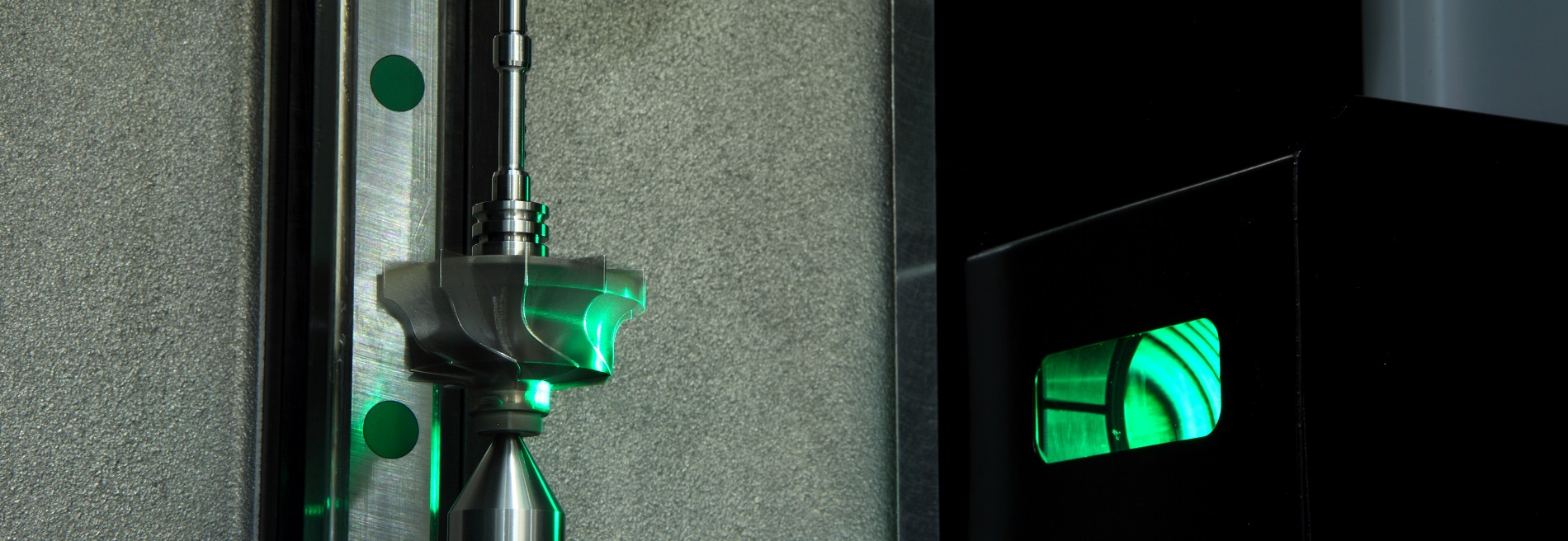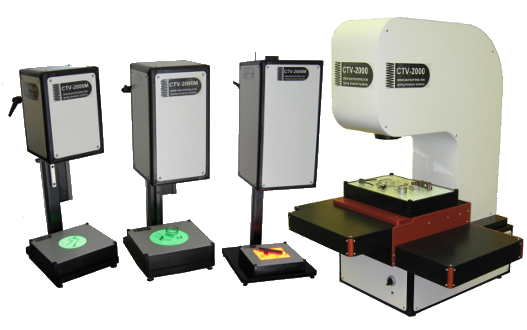The science behind optical measurement: fundamentals explained
The Role of Optical Dimension Systems ahead of time Metrology Strategies
Optical measurement systems have actually transformed assessment, bringing a degree of precision that was when unthinkable. You may be shocked to discover how these technologies, based upon fundamental concepts like reflection and interference, are applied across different markets. Their non-contact capacities not only enhance precision but likewise improve procedures. As you check out additionally, you'll find just how these systems are forming the future of dimension and top quality control.
The Advancement of Metrology: A Historic Viewpoint
As you discover the history of assessment, you'll find that its evolution mirrors mankind's pursuit for precision and standardization. From old people using body parts as systems of measurement to the growth of standardized weights and measures, each action shows our desire for precision. The Egyptians developed the pyramids using specific measurements, while the Romans advanced design with their innovative measuring tools.
Throughout the Renaissance, scientific breakthroughs moved the emphasis toward extra empirical techniques, paving the method for modern-day metrology. The intro of the statistics system in the late 18th century noted a considerable landmark, establishing universal requirements. Throughout the 20th century, technological developments additionally changed metrology, enabling highly precise dimensions in numerous areas.
Today, metrology continues to develop, incorporating digital modern technology and automation. This background highlights not simply the relevance of measurement however additionally our unrelenting search of boosting accuracy and consistency in our significantly intricate world.
Concepts of Optical Dimension Solutions
Understanding the principles behind optical dimension systems is important for accurate cause assessment. You'll intend to take right into account fundamental optical principles, measurement precision elements, and effective system calibration strategies. Each of these aspects plays an important duty in ensuring your dimensions are exact and trustworthy.
Fundamental Optical Concepts
While exploring optical dimension systems, you'll encounter essential optical principles that form the backbone of accurate data acquisition. Light acts in predictable means, and understanding these habits-- like reflection, diffraction, and refraction-- is vital for reliable measurements. You'll make use of lenses and mirrors to control light and concentrate it onto your target, ensuring precision in your readings. Furthermore, the wave nature of light enables interference patterns, which can improve dimension resolution. Polarization can likewise play an essential function in distinct signal from noise, enhancing the quality of your outcomes. By understanding these principles, you'll be geared up to take advantage of optical technologies successfully, paving the method for developments in assessment and ensuring your dimensions are both dependable and repeatable.
Dimension Precision Elements
To accomplish high measurement accuracy in optical systems, a number of variables come right into play, influencing the reliability of your outcomes. First, the high quality of the optical parts matters greatly. Premium lenses and detectors minimize aberrations and sound, guaranteeing your measurements are accurate. Second, environmental conditions like temperature level and humidity can influence dimensions, so keeping a stable atmosphere is crucial. Third, the placement of the optical system is crucial; also small imbalances can bring about substantial mistakes. The wavelength of light utilized influences the resolution and accuracy of your dimensions. By attending to these variables, you can enhance the total efficiency of your optical dimension systems, resulting in even more accurate and trustworthy cause your assessment applications.
System Calibration Methods
Accomplishing high dimension precision is only part of the equation; correct system calibration techniques are similarly vital in optical dimension systems. To guarantee your system delivers reputable results, you should regularly calibrate it using basic reference products. Begin by readjusting the optical elements, like lenses and mirrors, to reduce methodical errors. Next off, employ known dimensions to verify the system's output and make essential improvements. It's additionally essential to account for ecological elements-- temperature level and humidity can impact dimensions. Implement a routine calibration routine to preserve consistency with time. Finally, document all calibration procedures and results; this will assist you track efficiency and resolve any type of drift in accuracy. With these strategies, you'll improve the dependability of your optical measurement system.
Secret Technologies Behind Optical Measurement
Optical measurement systems rely upon a number of key innovations that improve precision and efficiency in assessment. One vital technology is interferometry, which uses the interference of light waves to determine tiny variations and surface irregularities with severe accuracy. You'll also locate laser scanning systems, which record detailed 3D data of items rapidly, making them vital for dimensional analysis.
Furthermore, CCD and CMOS sensing units play a significant duty in converting light into electrical signals, enabling high-resolution imaging and specific dimensions. Advanced formulas for picture handling further enhance dimension accuracy by analyzing data in real time, filtering system out sound and enhancing features.
Ultimately, optical fiber provide flexibility and the capacity to measure in challenging atmospheres while keeping signal stability. By leveraging these innovations, you can achieve premium cause your assessment jobs, making sure that your dimensions are both trustworthy and precise.
Applications of Optical Dimension in Market
As industries significantly require accuracy and performance, the applications of optical measurement systems have actually ended up being vital across different fields. In manufacturing, these systems assist you check dimensions and tolerances in real-time, making sure quality assurance without time-consuming manual checks. In the vehicle market, optical dimensions aid in straightening components with precision, improving security and performance.
In electronic devices, you're utilizing optical approaches to evaluate min attributes on motherboard, spotting problems that might cause failings. The aerospace market take advantage of non-destructive screening methods, enabling you to examine materials and elements without jeopardizing their stability.
Optical measurement also plays an essential duty in fabrics, making certain fabric dimensions meet specific requirements. optical measurement systems. With their capability to offer high-resolution data rapidly, these systems empower you to make informed choices, enhance procedures, and eventually drive innovation across your sector
Enhancing Precision and Effectiveness in Measurements
When you assume concerning improving accuracy in dimensions, accuracy in your measurement techniques is crucial. By simplifying these procedures, you can achieve quicker outcomes without compromising quality. Allow's check out how taking on sophisticated optical measurement systems can boost both precision and performance in your work.
Precision in Dimension Techniques
Accuracy in measurement techniques is necessary for accomplishing dependable outcomes in metrology, specifically considering that small inconsistencies can lead to substantial errors. By making use of sophisticated optical dimension systems, you can improve the precision of your measurements. These systems give high-resolution data that assist you spot also the slightest variants in measurements. You lessen unpredictabilities and boost repeatability in your processes when you take on these innovations. Additionally, accurate dimensions permit you to maintain quality assurance, ensuring that products satisfy rigorous specifications. This not only enhances your reliability yet additionally enhances client contentment. Investing in precision measurement tools eventually brings about increased effectiveness, minimized waste, and optimized production cycles. Accepting these strategies will certainly change your approach to metrology, producing exceptional outcomes.
Enhancing Dimension Processes
To enhance accuracy and performance in dimensions, enhancing your measurement processes is essential. Beginning by taking on optical dimension systems that provide real-time information, minimizing the moment invested in hand-operated recording. These systems usually incorporate perfectly with existing software application, enabling you to automate data collection and evaluation.
Following, standardize your dimension procedures. By executing consistent treatments, you lessen variability and boost repeatability. Do not forget to routinely adjust your devices to guarantee its accuracy.

The Influence of Optical Dimension on R & D
As researchers venture to press the borders of development, optical measurement systems have actually come to be indispensable tools in the advancement process. These systems supply you with specific, real-time information that enhances your ability to evaluate complicated materials and structures. In different areas, from biotechnology to aerospace, you depend on optical dimensions to enhance designs and improve product performance.

With high-resolution imaging and non-contact methods, you can reduce sample disturbance, enabling more accurate outcomes. This capacity to record minute information increases your R&D cycle, allowing you iterate designs rapidly and efficiently. Additionally, optical measurement promotes partnership across disciplines, as the data created is often conveniently interpretable and shareable.
Ultimately, integrating optical dimension systems into your research not just boosts performance however likewise deepens your understanding of the sensations you research study. By leveraging these advanced strategies, you're far better geared up to innovate and remain ahead in an affordable landscape.
Future Fads in Optical Measurement Equipments
With the fast development of technology, you're most likely to see significant changes in optical measurement systems that will certainly redefine their application across various sectors. You'll discover an action towards increased automation and combination of synthetic knowledge, enabling for real-time information analysis and boosted accuracy. Miniaturization is an additional trend; small gadgets will certainly enable measurements in tighter rooms, making them optimal for areas like aerospace and biomedical applications.
Additionally, the advent of innovative materials, such as photonic crystals, will certainly boost sensitivity and resolution. Anticipate to see systems that can operate in difficult settings, offering trusted measurements in severe problems. Cloud-based analytics will likewise play an essential role, using you accessibility to large datasets for much better decision-making. As these modern technologies converge, you'll discover that optical dimension systems not just enhance precision however additionally streamline workflows, eventually driving technology and efficiency in your optical measurement systems jobs.
Frequently Asked Questions
How Do Optical Measurement Systems Compare to Conventional Measurement Techniques?
Optical measurement systems provide higher precision and faster results compared to traditional techniques. You'll locate they record even more information factors precisely, minimizing human error and enhancing dependability, making them a recommended choice in various applications.
What Industries Benefit Most From Optical Dimension Equipments?
You'll discover markets like aerospace, automotive, and electronics profit most from optical dimension systems. These industries rely upon precise dimensions to assure top quality and efficiency, improving efficiency and reducing prices via sophisticated technology.

Are Optical Dimension Systems Expensive to Carry Out?
Optical measurement systems can be pricey to execute, yet their precision and effectiveness frequently warrant the cost. Buying such technology can cause significant long-lasting financial savings and enhancements in high quality throughout various applications.
What Skills Are Called For to Operate Optical Dimension Equipments?
To operate optical dimension systems, you'll require strong analytical abilities, focus to detail, and efficiency in software program tools. Experience with optics and an understanding of dimension concepts will likewise improve your performance and efficiency.
Exactly How Do Ecological Variables Affect Optical Measurements?
Environmental aspects like temperature, air, and humidity quality can distort optical measurements. You'll discover variants in accuracy as a result of light interference or refraction. optical measurement system. Maintaining secure problems is crucial for reputable and specific optical measurement results
Verdict
In summary, optical measurement systems are reinventing width by offering unrivaled precision and performance. By taking advantage of innovative principles and innovations, these systems enhance accuracy while lessening disturbances in different industries. As you explore future trends, you'll see just how the integration of AI and automation will continue to raise dimension methods, driving technology and improving quality assurance. Welcoming these advancements will certainly be necessary for staying competitive and achieving excellence in your field.
Attaining high measurement accuracy is just part of the formula; correct system calibration techniques are just as crucial in optical measurement systems.When you believe about boosting accuracy in dimensions, precision in your dimension methods is important. By making use of sophisticated optical dimension systems, you can improve the precision of your measurements.To boost accuracy and effectiveness in dimensions, enhancing your dimension processes is crucial. How Do Optical Dimension Systems Contrast to Traditional Measurement Techniques?